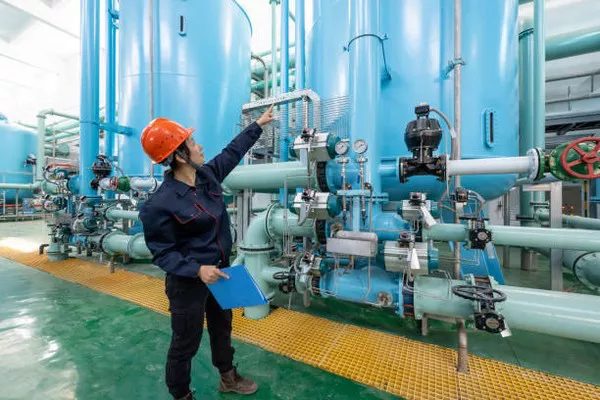Air conditioning systems are essential in maintaining comfortable indoor environments, especially in regions with extreme temperatures. Two critical components of these systems are the AC compressor and the condenser. While both are integral to the cooling process, they serve distinct functions and operate in unique ways. This article will explore the differences between the AC compressor and the condenser, their roles in the refrigeration cycle, and their significance in air conditioning systems.
The Basics of Air Conditioning Systems
Before diving into the specific components, it’s crucial to understand the fundamental principles of how air conditioning works. An air conditioning system operates based on the refrigeration cycle, which involves the absorption and release of heat to cool indoor spaces. The cycle consists of four main components: the evaporator, the compressor, the condenser, and the expansion valve.
Evaporator: This component absorbs heat from the indoor air, causing the refrigerant to evaporate and turn into a gas.
Compressor: The compressor pumps the gaseous refrigerant to the condenser, increasing its pressure and temperature.
Condenser: In the condenser, the refrigerant releases the absorbed heat to the outside air and condenses back into a liquid.
Expansion Valve: This valve regulates the flow of refrigerant into the evaporator, allowing the cycle to repeat.
The AC Compressor
Function
The AC compressor is often referred to as the “heart” of the air conditioning system. Its primary function is to compress the refrigerant gas that has absorbed heat from the indoor environment. By increasing the pressure of the refrigerant, the compressor raises its temperature, allowing it to efficiently release heat once it reaches the condenser.
Types of Compressors
There are several types of compressors used in air conditioning systems:
Reciprocating Compressors: These use pistons to compress the refrigerant and are commonly found in residential systems.
Scroll Compressors: These have fewer moving parts and provide efficient compression, making them popular in modern air conditioning units.
Screw Compressors: These are typically used in large commercial systems and rely on two interlocking screws to compress the refrigerant.
Rotary Compressors: Often found in smaller units, these use rotating vanes to compress the refrigerant.
Operation
The compressor operates using an electric motor that drives the piston or scroll mechanism. When the refrigerant enters the compressor as a low-pressure gas, it is compressed to a high-pressure gas. This process generates heat, which is why the compressor is often located outdoors or in well-ventilated areas to dissipate this heat efficiently.
Importance
Without the compressor, the refrigeration cycle would not function. It is essential for maintaining the flow of refrigerant throughout the system, ensuring that heat is effectively absorbed from indoors and expelled outside. A malfunctioning compressor can lead to inadequate cooling, increased energy consumption, and potential damage to other system components.
The Condenser
Function
The condenser’s primary role is to facilitate the heat exchange process. Once the high-pressure, high-temperature refrigerant gas exits the compressor, it flows into the condenser, where it releases the absorbed heat to the outside air. As the refrigerant cools, it condenses back into a liquid state, ready to return to the evaporator and continue the cycle.
Types of Condensers
There are two main types of condensers:
Air-Cooled Condensers: These are the most common in residential and commercial air conditioning systems. They use fans to blow air over the coils, facilitating heat dissipation.
Water-Cooled Condensers: These are typically found in larger systems and utilize water to absorb heat from the refrigerant, making them more efficient in some applications.
Operation
In an air-cooled condenser, the high-pressure gas enters the condenser coils, where it is exposed to cooler outdoor air. Fans assist in this process, drawing air over the coils to enhance heat transfer. As the refrigerant loses heat, it condenses into a high-pressure liquid, ready to be sent back to the expansion valve.
Importance
The condenser plays a crucial role in the efficiency of the air conditioning system. An efficient condenser ensures that the refrigerant is adequately cooled and condensed, allowing the system to maintain optimal performance. If the condenser is obstructed or malfunctioning, it can lead to decreased cooling efficiency and increased energy consumption.
Key Differences Between AC Compressor and Condenser
1. Functionality
AC Compressor: Its primary function is to compress the refrigerant gas, increasing its pressure and temperature.
Condenser: Its main role is to release heat from the refrigerant, causing it to condense from a gas back into a liquid.
2. Location in the System
AC Compressor: Typically located in the outdoor unit of the air conditioning system.
Condenser: Also located in the outdoor unit, but it is specifically designed to facilitate heat exchange.
3. Physical Characteristics
AC Compressor: Generally a sealed unit that houses moving parts (like pistons or scrolls) and is driven by an electric motor.
Condenser: Comprises coils through which the refrigerant flows, often surrounded by fins to enhance heat transfer.
4. Operational Role in the Refrigeration Cycle
AC Compressor: Essential for initiating the refrigeration cycle by pumping the refrigerant and maintaining its flow.
Condenser: Critical for the heat rejection process, allowing the refrigerant to cool and condense for the cycle to continue.
See Also THE COST OF SMALL AIR COMPRESSORS
Conclusion
In summary, while both the AC compressor and the condenser are vital components of air conditioning systems, they serve distinct functions within the refrigeration cycle. The compressor compresses the refrigerant, increasing its pressure and temperature, while the condenser releases the heat from the refrigerant, allowing it to condense back into a liquid state. Understanding these differences is crucial for anyone involved in the maintenance, repair, or design of air conditioning systems. Proper functioning of both components is essential for efficient cooling, energy conservation, and the overall performance of HVAC systems. Regular maintenance and prompt repairs can help ensure that both the compressor and condenser operate optimally, leading to a comfortable and energy-efficient indoor environment.

